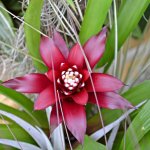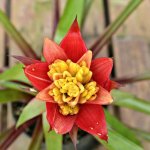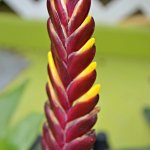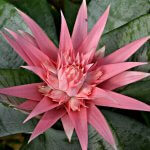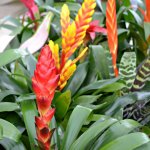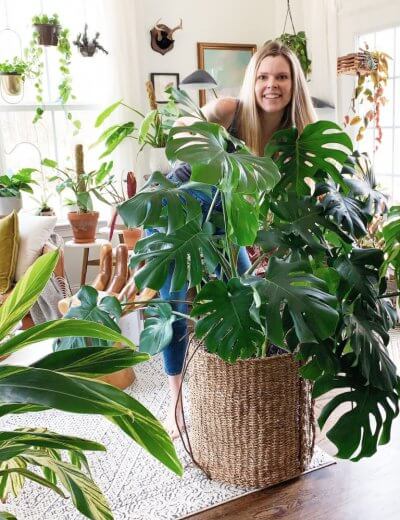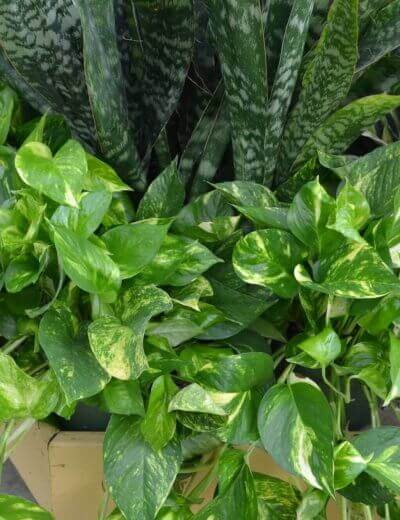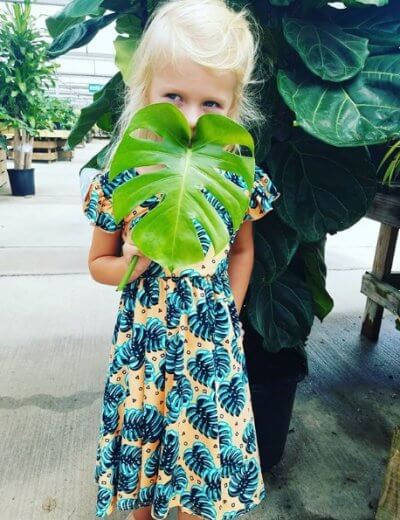- Up to 2’ Tall
- High light – Low light
- Water plant by placing water in ‘vase’ of foliage
- Easy to grow
- Needs warmth
- Lighting
- Indoors – medium to high light
- Outdoors – Slightly shaded or diffused sun during the summer months
Keep soil moist but not soggy (no wet feet). Constantly wet soil can cause root rot. The cup of the bromeliad should be kept supplied with water. Distilled or rainwater is best, but tap water at room temperature is fine. If your room is dry, you can mist once every week or so.
You can fertilize four to six times a year, with a batch of half strength household fertilizer (such as Ironite or Miracle Grow All Purpose Plant Food) making sure to mist the leaves. When transplanting or repotting, you may add time-released fertilizer such as Osmocote to the soil.
65-70° F is ideal, but they can take extremely high temperatures as long as it is kept moist.
Encase bromeliad, pot and all, in a clear plastic bag. Add an apple and seal the bag. Keep the bagged plant out of sunshine for four days. Then, remove the plant and discard the apple; put the plant back in its normal location. The plant should start to show color and bloom within a month. If nothing happens after forty days, try again.
PLANT PARENTHOOD PANEL DISCUSSION AT FAIRVIEW GARDEN CENTER Fairview Greenhouses & Garden Center will host a houseplant-centered discussion featuring local panelists with […]
Read More
Success with houseplants starts with choosing the right plant for you. Often, that means starting with something small and easy (think smaller investment of money and time). We’ve narrowed down a list of our favorite houseplants that will help you turn your thumb from brown to green.
Read More
How to Choose the Right Plant for the Right Spot We all love to be surrounded by the people and things that […]
Read More

